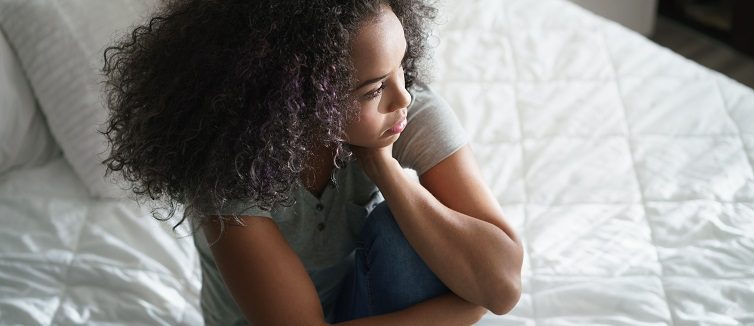The media sometimes represents Lyme disease as a prolonged and debilitating condition. In reality, Lyme disease is easy to treat, especially if you catch it early. Most people find their symptoms resolve within a few weeks.
If your test positive for Lyme disease, you’ll need antibiotics to clear the infection. Your doctor may prescribe antibiotics without a test if it’s likely you have the disease. (You may not need a test if you got a tick bite in a Lyme-endemic area and have the characteristic rash, for example.)
The standard treatment for Lyme disease is 10 to 14 days of antibiotics. Doctors usually prescribe doxycycline, amoxicillin, or cefuroxime. (You may see a different name since these medications come as both generic and brand names.)
Typically, you’ll need to take the drugs by mouth twice per day. In some cases, your doctor may prescribe a drug that’s taken three times per day.
While all drugs can have unwanted side effects, the side effects with these drugs are usually mild. They can include constipation, headache and diarrhea, among others. If you experience any side effects that concern you, let your doctor know.
Be sure to let your doctor know if you are pregnant or breastfeeding, so your doctor can ensure the antibiotic prescribed is safe. Your doctor will also consider your other health conditions and allergies when choosing an antibiotic.
Never Miss a Beat!
Subscribe to Our HealthBeat Newsletter!
Thank you for subscribing!
You can now select the specific newsletters you'd like to receive.
You are already subscribed.
Subscribe to more newsletters in our email preference center.
Sorry, an error occurred. Please try again later.
Get Healthy Tips Sent to Your Phone!
Treatment for More Serious Forms of Lyme Disease
If you have had Lyme disease for many months, the bacteria may be more pervasive in your body. It may be causing more serious conditions, like brain inflammation, a heart infection, or arthritis.
Fortunately, these more serious complications are rare. For example, the heart infection known as Lyme carditis occurs in 1 out of 100 Lyme disease patients.
Your doctor will diagnose and treat you for a more serious form of Lyme based on your symptoms and a physical exam.
With more severe Lyme disease, you’ll need to take a longer course of antibiotics, a stronger dose of antibiotics, or both. Depending on what symptoms you have and how bad they are, you may need to take antibiotics for 14 to 28 days.
If you have meningitis or a serious form of Lyme carditis, your doctor may prescribe an intravenous antibiotic. A nurse will administer the IV drug at the hospital. Once your condition is stable, you can switch to the oral form of the drug.
If your symptoms don’t subside after your course of antibiotics, your doctor will likely prescribe a second course. This second course is typically given intravenously, at least at first, and will last up to a month. There is no evidence to support taking antibiotics to treat Lyme beyond two courses of treatment.
Outlook After Lyme Disease Treatment
Once treatment has started, most people treated for Lyme disease fully recover within a few weeks. This is especially true if Lyme is caught in the first few months, before it progresses to more serious forms.
Many patients will have some lingering symptoms of fatigue or joint pain even after they finish treatment. These symptoms should subside within a few weeks or months.
Around 10% of people with Lyme disease experience symptoms six months after the recommended antibiotic treatment. These symptoms may include joint pain, confusion, and fatigue. This is known as post-treatment Lyme disease syndrome.
There is currently no treatment for this condition, which some believe to be an autoimmune condition. Fortunately, post-treatment Lyme disease syndrome will generally improve on their own with time.
Beware of Unproven Lyme Disease Treatments
Some alternative providers suggest non-standard therapies or very long courses of antibiotics. These treatments are not proven and can have dangerous side effects. If you delay treatment to try a non-antibiotic remedy, your symptoms can worsen and become more difficult to treat.
Remember, it is important to take the antibiotics as many times per day as prescribed. Even if your symptoms subside, be sure to finish the course of treatment. This ensures bacteria is fully eradicated and prevents bacteria from becoming resistant to the drugs.
Sources
American Lyme Disease Foundation. Treatment Guidelines. Link
CDC. Lyme Disease: Treatment. Link
CDC. Post-treatment Lyme Disease Syndrome. Link
Dr. Allison DeLong. Estimation of cumulative number of post-treatment Lyme disease cases in the US, 2016 and 2020. BMC Public Health. Link
Dr. Bryna Fitzgerald et al. Metabolic Response in Patients With Post-treatment Lyme Disease Symptoms/Syndrome. Clinical Infectious Diseases. Link
Dr. Linden Hu. Patient Education: Lyme Disease Treatment (Beyond the Basics). UptoDate. Link
National Center for Complementary and Integrative Health. Lyme Disease. Link
About UPMC
Headquartered in Pittsburgh, UPMC is a world-renowned health care provider and insurer. We operate 40 hospitals and 800 doctors’ offices and outpatient centers, with locations throughout Pennsylvania, Maryland, New York, West Virginia, and internationally. We employ 4,900 physicians, and we are leaders in clinical care, groundbreaking research, and treatment breakthroughs. U.S. News & World Report consistently ranks UPMC Presbyterian Shadyside as one of the nation’s best hospitals in many specialties and ranks UPMC Children’s Hospital of Pittsburgh on its Honor Roll of America’s Best Children’s Hospitals. We are dedicated to providing Life Changing Medicine to our communities.
